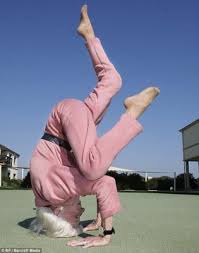Rehab post Total Knee Arthroplasty in Older Adults with a Focus on Balance
Developed by: Brittany Stapleton-Livingston, SPT
Overview
I had the opportunity to work with older adults in the clinic. It was common to see patients that had decreased balance and were at risk for falls. I often met clients that reported falling. I was not surprise when I tested these clients and they had poor balance. In Evidence-Based Practice II last fall, I examined if lower extremity strengthening exercises were more effective than balance training for reducing falls risk in the older adults with cognitive impairment. For my capstone project, I thought that it would be interesting to learn more about balance training in older adults post TKA. I have seen rehabilitation for Total Knee Arthroplasty patients in the acute care and outpatient settings. I noticed that the exercises in the rehabilitation process varied depending on the setting and balance exercises were often not included even in the outpatient setting.
Falls in Older Adults
Thirty percent of adults older than 65 years old fall at least once per year. Multiple risk factors predict a fall such as cognitive impairments, fear of falling, poor medication management, and deficits in balance, strength, vision, and gait. The risk of falling increases 3-fold in people with impaired balance or gait. Despite pain relief, older adults fall and have functional deficits post TKA.
The Project
I wanted to evaluate the evidence that investigated interventions implemented during rehab for older adults post TKA. More importantly, I wanted to identify exercises that improved balance in older adults after a TKA. Through literature review, I identified interventions that were evidence-based for improving balance outcomes in older adults. I completed an Evidence Table to summarize the information that I found. I created a presentation to explore rehab post Total Knee Arthroplasty and a handout to serve as a quick reference for DPT students while in the clinic. In order to receive feedback from audience members an Evaluation Form is essential for reviewers to complete after reviewing the presentation or voicethread (https://voicethread.com/share/6741541/).
Reflection
My capstone project was a good experience. There has been a lot of research done that investigates balance training in older adults with knee osteoarthritis and rehabilitation post TKA. I found it most difficult identifying evidence that specifically examined balance training post TKA. I have gained an appreciation of physical therapy interventions for this patient population that is evidence-based. I hope that the handout that I created will be useful for students to use while on clinical rotations. I learned that TKA affects an individual’s the risk of falling after surgery. I definitely will be able to apply what I have learned from my capstone project in the clinic. Also, I look forward to sharing this information with peers in clinical practice.
Acknowledgments
I would like thank my committee members Carol Guiliani and Laurie Ray for ongoing support, feedback, and advice throughout the semester. I also appreciate the support and advice offered by my capstone project advisor, Prue Plummer.
References
Liao, C., Liou, T., Huang, Y., & Huang, Y. (2013). Effects of balance training on functional outcome after total knee replacement in patients with knee osteoarthritis: a randomized controlled trial. Clin Rehabil, 27(8), 697-709.
Mayo Clinic Staff. (2014, October 9). Disease and Conditions Osteoarthritis : Risk Factors . Retrieved from Mayo Clinic: http://www.mayoclinic.org/diseases-conditions/osteoarthritis/basics/risk-factors/con-20014749
Pozzi, F., Snyder-Mackler, L., & Zeni, J. (2013). Physical exercise after knee arthroplasty: a systematic review of controlled trials. Eur J Phys Rehabil Med, 49(6), 877-862.

